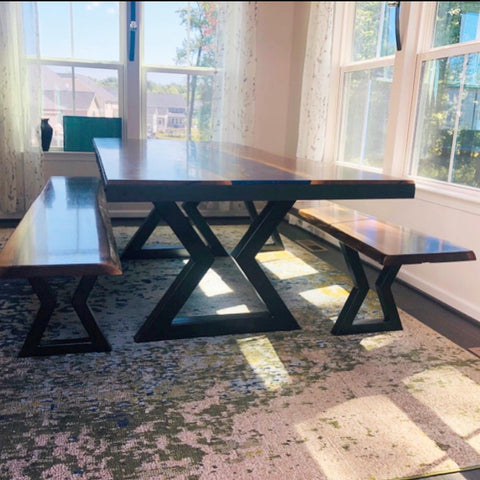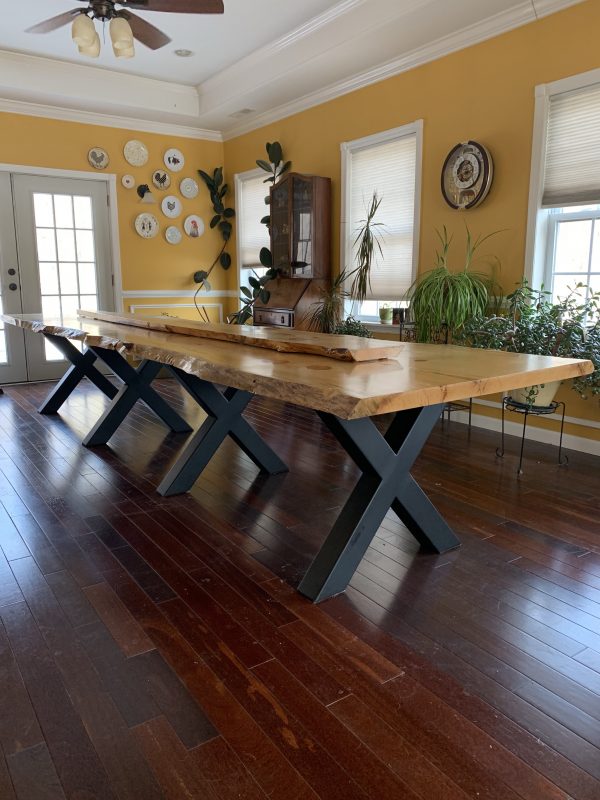How to Maintain and Care for Your Dining Room Table Legs
How to Maintain and Care for Your Dining Room Table Legs
Blog Article
How to Choose the Perfect Dining-room Table Legs for Your Home Design
Choosing the excellent dining space table legs is a nuanced process that calls for careful consideration of numerous aspects, including your room constraints, aesthetic preferences, and useful requirements. The interplay between styles, dimensions, and products can substantially affect the atmosphere of your dining area, making it essential to approach this choice systematically.
Assess Your Eating Space
Assessing your dining space is crucial for choosing the right table legs that match both visual appeals and capability. Begin by measuring the measurements of your eating location, including ceiling height, flooring space, and proximity to other furnishings. This details will assist identify the ideal size and elevation of your dining table, which straight affects the selection of table legs.
Following, take into consideration the style and format of your eating space. An open-concept design may profit from table legs that offer aesthetic agility, such as slender steel or acrylic options. On the other hand, a much more conventional setup could call for durable wood legs that give a sense of permanence.
Assess the existing color combination and materials in your dining area. Integrating the table legs with these components produces a natural look that improves the overall decor.
Ultimately, an extensive analysis of your eating room will certainly direct you in making a notified decision, ensuring that your table legs not only improve the visual appeal but additionally offer functional objectives.
Consider Your Design Preferences
When selecting dining area table legs, it is necessary to mirror on your personal design preferences, as they significantly influence the overall visual of your dining space. Your selection of table legs can either complement or contrast with existing decor, making it critical to align them with your recommended interior decoration style.
If your home leans towards a modern-day visual, consider streamlined steel or minimalist wood legs that supply a clean, uncluttered appearance. For a much more traditional strategy, elaborate wood legs with elaborate makings can add a touch of style and elegance. Industrial designs take advantage of durable, resources such as recovered wood and steel mixes, showing a sturdy appeal.
In addition, farmhouse and rustic designs typically prefer durable, beefy legs that evoke a sense of heat and comfort. Alternatively, if your decoration is diverse, you could choose unusual shapes or a mix of products to produce aesthetic interest.

Evaluate Product Options
The selection of material for dining space table legs plays an essential duty in both resilience and aesthetic charm. Usual products consist of timber, steel, and composite alternatives, each offering distinct attributes that can affect the total appearance and longevity of your table.
Timber is a classic choice, known for its heat and adaptability. Woods like oak and walnut supply phenomenal strength and can be finished in numerous stains to match any design. Nevertheless, softwoods like want are a lot more susceptible to scrapes and dents, making them much less optimal for high-traffic areas.
Steel legs, commonly crafted from steel or aluminum, exude modernity and commercial beauty. They are resistant and very resilient to use, making them suitable for families with youngsters or regular events (dining room table legs). Additionally, metal can be finished in numerous shades, enhancing the customization opportunities
Composite materials, such as MDF or laminate, deal cost and varied styles. While generally much less long lasting than solid timber or metal, they can still supply an elegant appearance and are usually simple to maintain.
Inevitably, the material you pick need to line up with your lifestyle, visual preferences, and the degree of use your eating table will experience.
Determine Height and Dimension
Selecting the ideal height and dimension for your dining space table is important for both functionality and comfort. The common height for eating tables typically varies from 28 to 30 inches, allowing sufficient legroom for the majority of individuals when seated. It is vital to think about the measurements of your dining space and the kinds of chairs you plan to make use of.

In addition, consider the proportions of your dining room. A larger table in a roomy area can produce a grand setting, while a smaller sized table functions well in click now even more intimate setups. Inevitably, the appropriate elevation and dimension will balance with your general design and boost the eating experience for you and your visitors.
Explore Personalization Opportunities

In addition, the style of the legs can be customized to fit various styles, such as rustic, contemporary, or industrial. Conical legs can evoke a mid-century modern feeling, while chunky, block-style legs might resonate with standard or farmhouse decoration.
Home owners can likewise explore shade finishes, from all-natural timber spots to repaint, enabling them to match or comparison with the table top and surrounding decor.
In addition, leg height can be readjusted to accommodate other details seating arrangements or individual preferences, boosting both comfort and functionality.
Last but not least, distinct decorations, such as carvings or decorative braces, can even more individualize the table legs, making the dining experience not just a dish but a statement piece in the home. By taking into consideration these personalization alternatives, property owners can produce an eating room table that genuinely mirrors their individuality.
Final Thought
Choosing the optimal eating area table legs requires cautious factor to consider of various factors, including the measurements of the eating room, style preferences, material longevity, and desired height. Customization alternatives even more boost the capacity to achieve a cohesive aesthetic that complements the general decoration. By methodically reviewing these components, homeowners can guarantee that the selected table legs not only satisfy practical needs yet additionally add favorably to the eating experience and setting of the home.
Choosing the excellent eating area table legs is a nuanced procedure that calls for mindful factor to consider of different aspects, including your area restrictions, aesthetic preferences, and practical requirements.Examining your eating area is vital for choosing the right table legs that match both looks and performance.When identifying size, measure the location where the table will certainly be put to ensure it fits comfortably, permitting for at the very least 36 inches of clearance around the table for simple movement. A bigger table in a large area can create a grand setting, while a smaller sized table works well in even more intimate setups.Selecting the perfect eating space table legs requires mindful factor to consider of various variables, consisting of the dimensions of the eating area, design choices, material resilience, and desired elevation.
Report this page